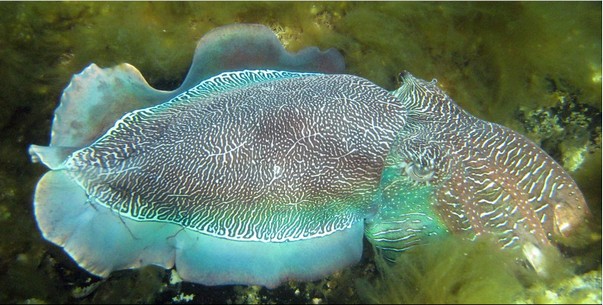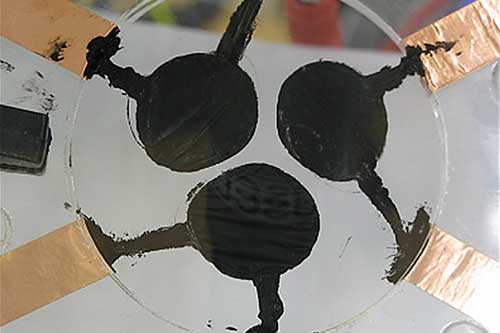
Squid are the psychedelic champions of the animal kingdom, rippling ever-changing patterns of colour across their skin to communicate with each other, dazzle their prey and camouflage themselves against predators. They do this using dedicated pigment-containing cells in their skin called chromophores, which they can expands and constrict at will, changing both the colour and texture of their skin. Researchers at Bristol University’s department of engineering mathematics have now designed synthetic chromophores which, they say, prove that it is possible to create an artificial skin that could blend in with backgrounds or flash display signals to attract search-and-rescue operations.

The skin the team has developed is made from a soft electroactive dielectric elastomer, coated with black carbon grease. Applying a current makes this elastomer expand and contract. Arranging these artificial chromatophores in a linear array, the team devised mathematical algorithms to control how the cells react to changes in state of neighbouring cells, to see if this could mimic any of the patterning seen in squid.
The team succeeded in mimicking a squid display known to marine biologists as ‘passing clouds’, where bands of colour spread in waves across the skin; the animals use this to distract and divert predators. “Our ultimate goal is to create artificial skin that can mimic fast acting active camouflage and be used for smart clothing such as cloaking suits and dynamic illuminated clothing,” said Aaron Fishman, one of the leaders of the project and a visiting professor at the department. “The cloaking suit could be used to blend into a variety of environments, such as in the wild. It could also be used for signalling purposes, for example search and rescue operations when people who are in danger need to stand out.”
In a paper in the Journal of the Royal Society Interface, Fishman and the team explain how they built the system and the mathematics they developed to control it. In future, they say, they will work on improving propogation of patterns, analyse different pattern types and devise new algorithms to simulate patterns in two-dimensional chromophore arrays.




Red Bull makes hydrogen fuel cell play with AVL
Surely EVs are the best solution for motor sports and for weight / performance dispense with the battery altogether by introducing paired conductors...